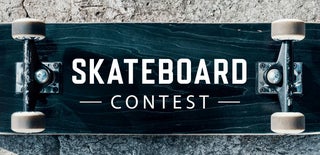Introduction: Electric Longboard From a to Z
The idea was to create entirely that electric longboard and try different thing than the usual diy board i've seen in tutorial ( not saying i did better, just wanted to do different).Like using LiFePO4 battery instead of lithium ion, making a gear drive using gears instead of classical belt drive and one the hardest thing i really wanted to do was to put everything (battery, electronics etc...) in a thin board (2cm max).
In order the step was :
A - the deck
1 - design the deck on fusion360 and and cnc-machine it
2 - laminate the wood deck with fiber glass and carbon fiber
3 - Machine the aluminium lid and make it removable
B - Battery and electronics
1 - make the 32V/8Ah LiFePo4 flat battery
2 - Welding of all the components (battery, bms, VESC - focbox, anti-spark on/off)
3 - 3d printing a lid for electronics and machined an aluminium heatsink for the VESC
C - the gear drive
1 - Designed and machined the aluminium motor bracket
2 - Mount everything on the back trucks
D - After more or less 7/8 months, finally try it...
Supplies
-
Step 1: THE DECK - Design and Milling
The first step was to design the board on fusion as i wanted to machined it on my new diy cnc (new toy, héhé...).
Like you can see, i did it in two part just because for the first milling test, i had in my garage some 10mm plywood.
It was exactly what i wanted, a 20mm thick deck.
Step 2: THE DECK - Fiberglass and Carbon Reinforcement
So i did the fist milling test with that bad quality plywood and quite happy with the result, i decided to try to reinforced it by vacuum laminate it with 2 layers of fiberglass and one carbon layer on the top and the same on the bottom.
I needed it to be enought stiff and rigid to support my weight on only 4mm of bad plywood, because of the place needed for batteries. (20mm in total less 16mm for batteries).
Vacuum laminated is pretty easy to do, it was the first time i tried it, i just baught a small and cheap vacuum pump (for air conditioner) and did it.
The result like you can see is quite nice (esthetics and mechanicly speaking) for a first try.
Step 3: THE DECK - Aluminium Battery Lid
I wanted an aluminium lid to close the battery compartment, so i did in aluminium of 2mm thick closed by 12 screws.
Step 4: BATTERY AND ELECTRONICS - the Battery
I determined the power, the motor speed and the gear i needed by reading this article writed by Benjamin Vedder (the guy who created the VESC : controller especially dedicated to electric sk8).
So i needed a 32V8Ah battery, the voltage can look weird but it's because of my choose of lithium technology (LiFePo4) wich are at 3.2V and not 3.7 like li-ion. I wanted this kind of battery for their reliability (no fire, no explosion and their flat form factor etc...) despite the fact that their power/size ratio is less good than lithium-ion.
there is 10 elements of 3.2V8Ah with a LiFePo4 dedicated BMS (for charge and discharge).
Step 5: BATTERY AND ELECTRONICS - the VESC and Antispark On/off
I choose for the controller a focbox from enertion, which is a variant of the open source VESC from B.Vedder.
Not much to say about it, just plug the battery on one side and the motor on the other side.
Another thing quite important is that antispark on/off button, this model is one time again a variant of a Vedder's plan (that guy is everywhere in e-sk8 and kind of an electronic genious!!! from my point of view at least), like we play with high current,we need that system to avoid spark each time than we turn on the skate, there is also a safety-fuse on this part too.
Like the focbox was to thick to inside the 16mm space, i needed a second lid to cover the eletronics, so i design (still in fusion) and 3printed it, and mill an aluminium heat sink to evacuate the heat from the focbox.This the place for the on/off switch and the charging location too.
Step 6: GEAR DRIVE - Gear and Aluminium Motor Bracket
I choose to do a gear drive because like i said previously i like to do different
It's not a first, we already saw these gear drive on mountain-board because of the high torque needed (as a geared drive can deliver much more torque than belt). There is also much more place under the deck to do it , so it was a challenge to do it on a longboard.
For the gear i choose a 40 teeth (attached to the wheel) and 18 for the gear on the motor, to have 2.2 ratio to be in adequacy with my motor.
You can calculate all those parameters on a page like this one.
Step 7: FINALLY...
So after a few days of setting on computer, i finally try that longboard after a very long time (about 7 months to do it), it worked liked i wanted, between 35/40 km/h and 10 to 15km of autonomy depending the speed and i could climb up to the small mountain i got here (400 meters high), challenge successfull...
A few weeks after, i unmount it and sold all the parts indivdually, the best was finally the design/making, i prefer the bicycle to move in my life but it was very instructive, i learn a lot with this project.
I hope you enjoy this instructables like i enjoyed making this longboard

Participated in the
Skateboard Contest












